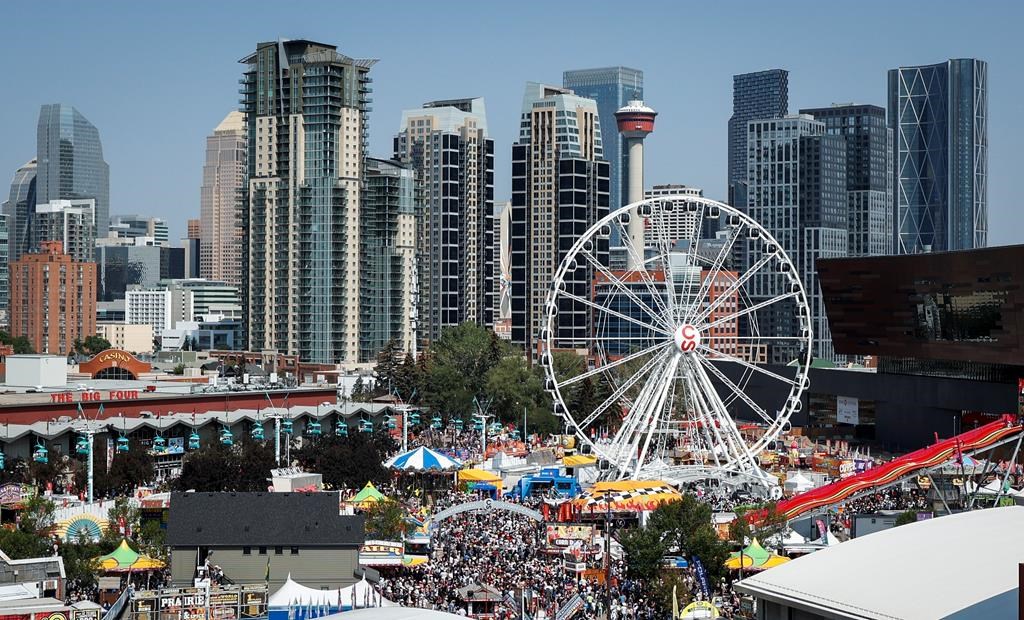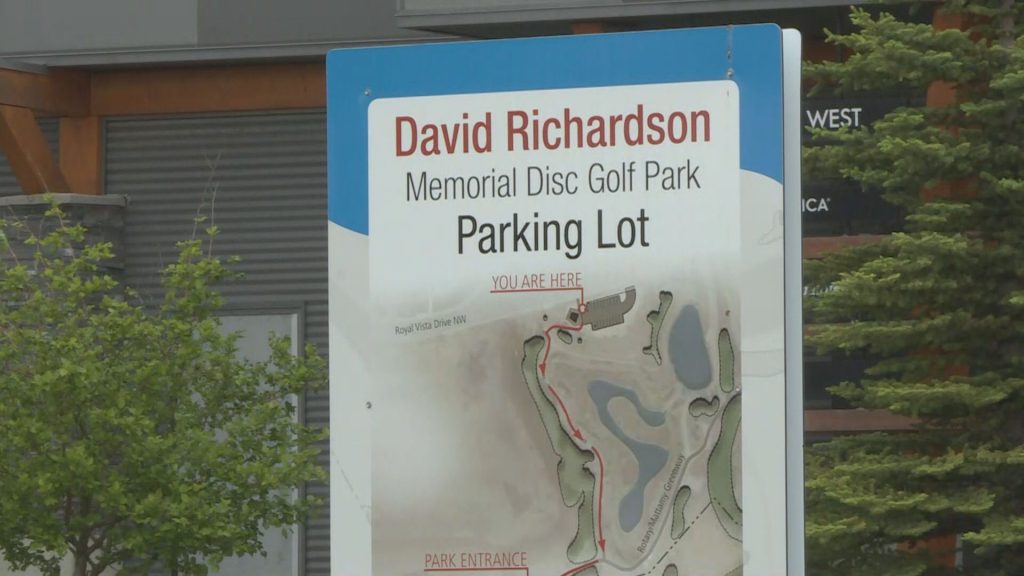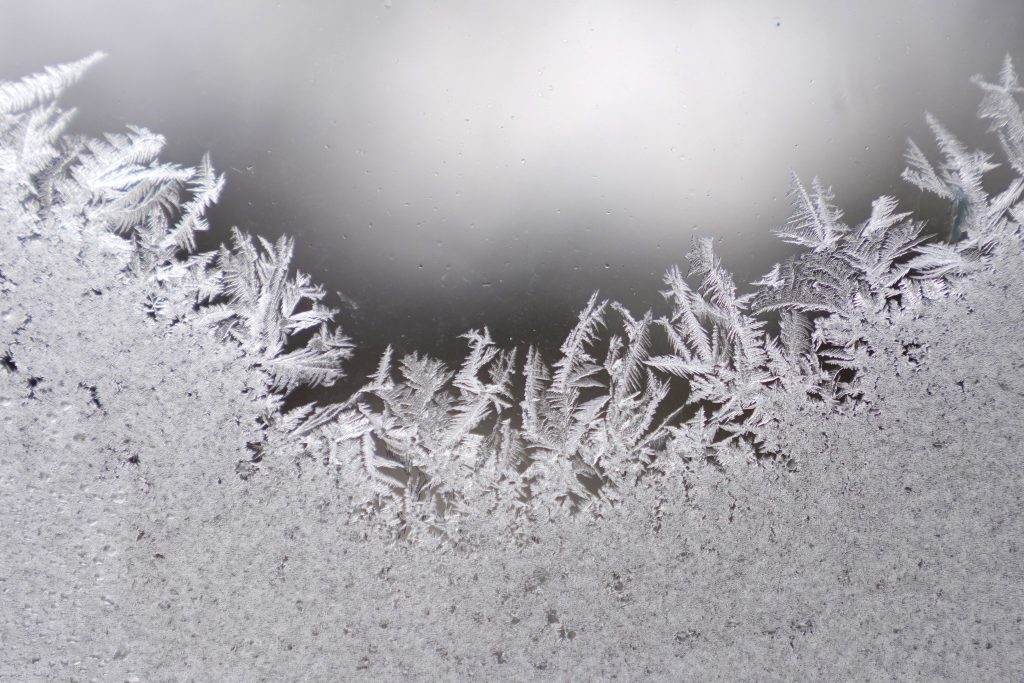‘We continue to need your efforts’: Progress made on pipe repairs but Calgary still days away from return to normal

Posted Jun 9, 2024 3:36 pm.
Last Updated Jun 9, 2024 7:01 pm.
City officials updated the water main break impacting the Calgary’s water supply on Sunday afternoon and say there is still no hard timeline on a return to normal despite crews making significant progress on the damaged pipe.
Mayor Jyoti Gondek was joined by Water Services Director Nancy Mackay and Emergency Management Agency Chief Sue Henry, with the trio reiterating that Calgarians have done a good job curbing their water use over the past couple of days, and they urge more of the same in the coming days.
“We continue to need your efforts,” Gondek said.
Mackay said crews have made some progress in their efforts to remove the broken part of the south Bearspaw feeder main that cracked open near 16 Avenue NW and Home Road last Wednesday evening.

Crews have now cut the first slice of the damaged pipe and Mackay said they aim to have the compromised parts of the feeder main removed by the end of the day.
Following an assessment, crews will identify the parts needed to repair the pipe and then move on to a welding phase where a new section will be installed. Once repairs have been made, the city will need to flush the pipe before water use can go back to normal.
“There are several steps that we are continuing to refine,” Mackay said. “It remains too early to say when the boil water advisory and restrictions will be lifted.”
Both Mackay and Gondek said nothing has changed from the five to seven day soft timeline the city established on Saturday.
The Sunday afternoon update comes after Gondek apologized to Calgarians earlier in the day for the communication coming from the city regarding the water crisis.
She pledged the city was going to step up its communications with several additions that include daily news conferences, infographics, and clear timelines.
Gondek also says she will be at the Emergency Operations Center at 8:30 a.m. and 2 p.m. every day until the problem is solved.
She says Calgarians on average consume 173 litres of water per day or the equivalent of two full bathtubs, and that unofficially, Saturday saw another decrease in water use, going from 484 million to 440 million.
Water restrictions and ways to reduce water
Gondek says ways to reduce water consumption include shaving time off a shower, forgoing flushing unless needed, and not doing as many loads of laundry.
“Turning off your humidifiers, your ice machines and your automatic sprinkler systems. If you have sprinkler systems systems on a timer, please turn the timers off. Better yet, just turn off the main valve for outside watering,” she said.
Some other ways to reduce water are listed here:
- Using the dishwasher and washing machine only when required and with full loads
- Turning off humidifiers, ice machines and automatic sprinkler systems
- Scraping your plate clean rather than rinsing off food
- Washing vegetables and fruit in a partially filled sink or pot and then rinse them quickly
- Keeping a jug of drinking water in your fridge. Don’t run the tap to get ice-cold water
- Turning off the tap when brushing teeth or shaving
- Limiting showers to five minutes or less and keeping baths shallow
The city has been asking Calgarians to reduce their water consumption by 25 per cent, but Gondek says it hasn’t been clear in providing examples of reducing water consumption.
“In effect, if you flush the toilet five times fewer, you would accomplish it. If you have two less kitchen sinks full of water, you would accomplish that,” she said.
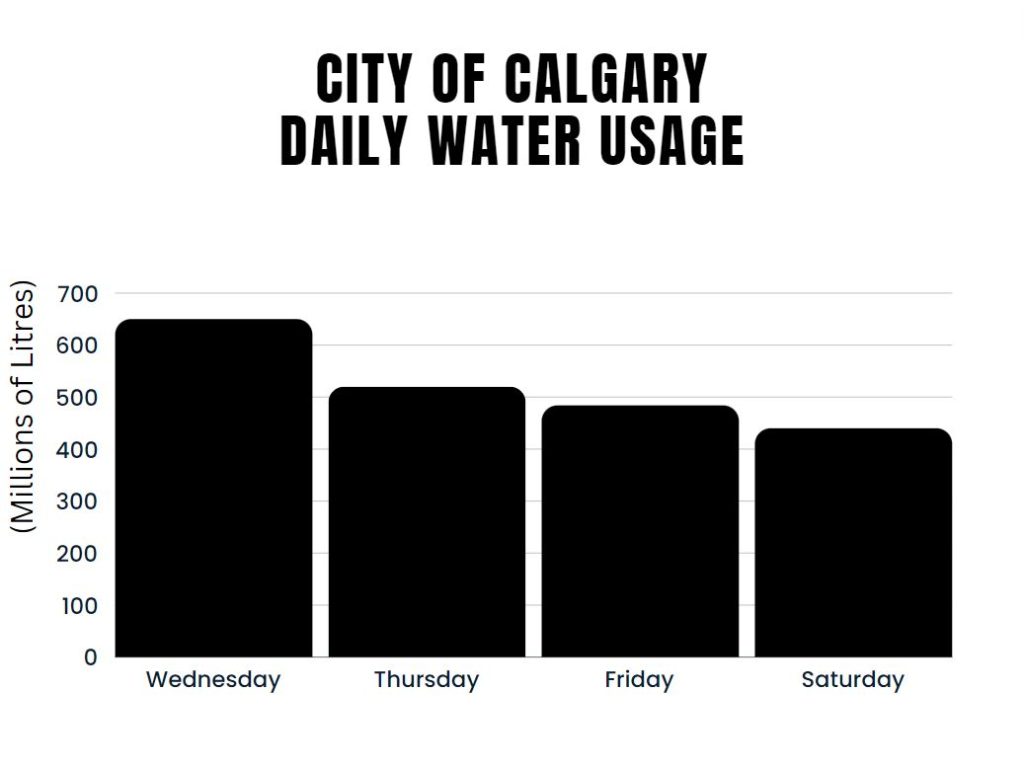
The city remains under Stage 4 water restrictions. Henry said that fines could be issued this weekend, noting Sunday they have received more than 630 calls for water misuse, but noted that no fines have been handed out.
Businesses are being asked to stop water use for all non-essential services. Businesses using water to deliver a product or service that is life-sustaining for people, animals and plants are exempt.
Anyone caught breaking the rules could face fines starting at $3,000. Fines for violating a fire ban range from $500 to $5,000.
A full list of restrictions and bans in place can be found here.
Bowness Community Association in need of water bottles
The city said early Thursday that 500 homes and 100 businesses in the Bowness area had been affected by the break so far.
Bowness is under a boil water advisory, along with a Stage 4 outdoor water restriction for all Calgarians, but the area also has no clean drinking water aside from the water wagons the city is supplying.
However, Ward 12 Councillor Evan Spencer said on X that the Bowness Community Association is running low on water bottles and there are families in need.
He is asking residents if they have any to spare to drop them off at 7904 43 Avenue NW.
Gondek wants Calgarians to know that they don’t need bottled water, as they can access clean drinking water through their taps. The difference now is they are being asked to cut down on their usage.
“So if you are living in a community that is not Bowness, you are not under a boil water advisory, you have water that is safe, it’s treated water from our facilities, you have that available to you in your taps. Please use that water as you need to remember to conserve it as much as possible. Folks in Bowness do not have that luxury right now,” Gondek said.
“There’s a lot of people with mobility issues and to get them drinking water, we need bottled water. And for the folks that are able-bodied, they’re bringing containers and they’re filling up at the water wagons. So for those of us in communities that are not under a boil water advisory, you don’t need to stockpile bottled water.”
She also reminds residents that Bowness is still open for business, and to support local in the area.
“They have been troopers through this. And we can certainly help them out by showing our support,” she said.
Broken feedermain delivers water to 60 per cent of Calgarians
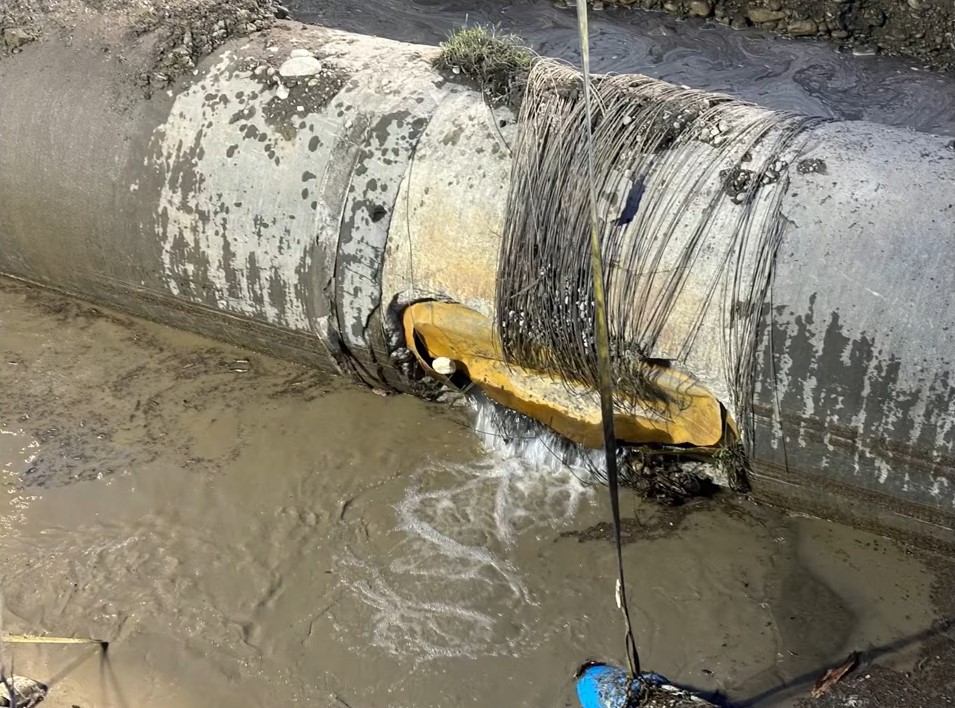
The feedermain that broke is the Bearspaw South Feedermain, which serves 1.2 million people, as well as people in Airdrie, Chestermere, and Strathmore.
Gondek says it provides water to reservoirs in 23 different locations throughout Calgary.
“So think of these reservoirs as tanks that we fill with water. And they are underground, sometimes under soccer fields. And imagine now that you’ve got this tank that’s full, and people are drawing on it, and it’s slowly, slowly coming down. Once it’s empty, it can’t be refilled because the feeder main is broken,” she explained.
“That’s why we could run out of water. That’s why the situation is so critical.”
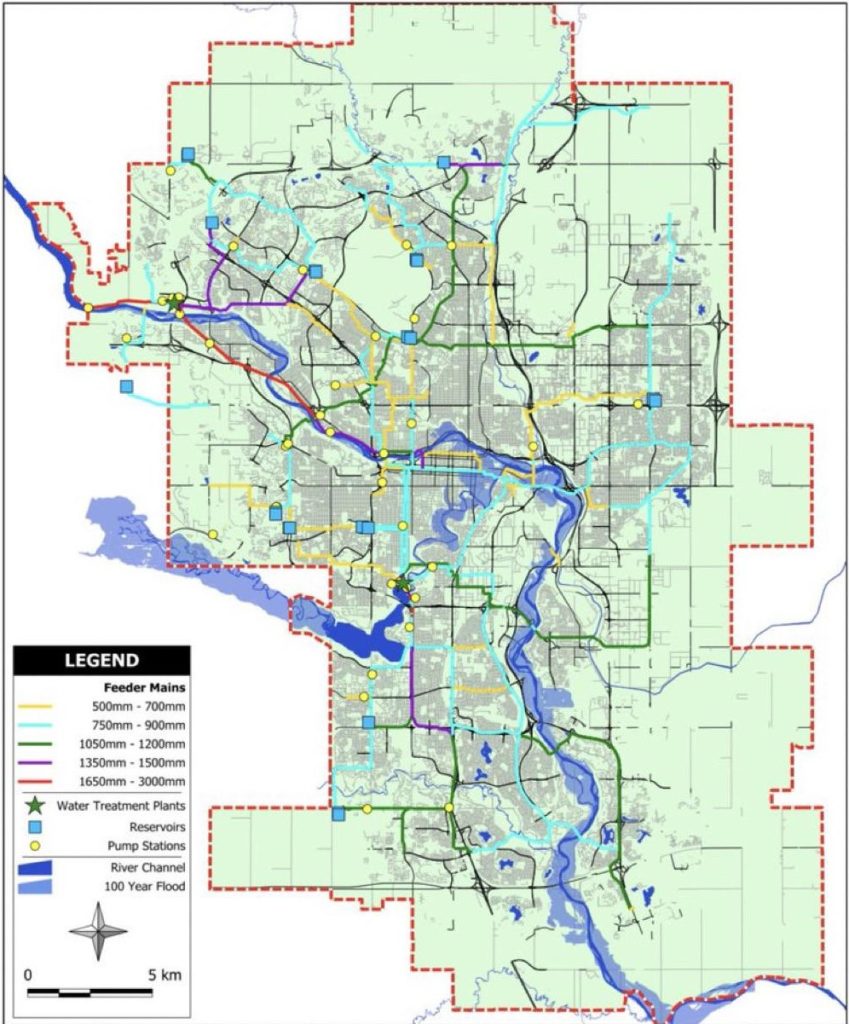
Gondek says it’s not a simple repair because there is a difference in size between a main line and a feedermain.
“This is the difference between a water main that’s the size of a pizza versus a water main that you can drive a truck through,” she said. “This feedermain is so big, you could drive a truck through it.”
“So when it broke, it flooded that area of Bowness because there’s pressure pushing that water through the pipe. And so it took time to remove water from the site.”
The feedermain is 11 kilometres long and almost two metres in width, and even though the break occurred in the northwest, the sheer size of the feeder line impacts all Calgarians.
Gondek says once the water was removed, crews were able to go in and inspect the site. Now that that has been done, the city is going to implement a repair plan, which means replacing the broken piece with a replacement one.
“There’s going to have to be some work that’s done. It will involve welding on the inside of the pipe as well as the outside,” Gondek explained.
She says an epoxy material is going to be applied as a seal, and then a tent for the site as heat is needed to keep the seal tight. Then, the pipe can be flushed of debris and officials can ensure the quality is safe.
“That’s why this is all going to take at minimum five to seven days,” she said.
“It is a really big repair job because this piece of infrastructure is so big, and that feedermain is a major artery. This feedermain delivers water to 60 per cent of the city.”
This story is being updated with the latest developments. Listen live to CityNew 660.
